Chushusai (Mid-Autumn Festival)
Date: first half of October (three-day weekend that includes Sports Day)
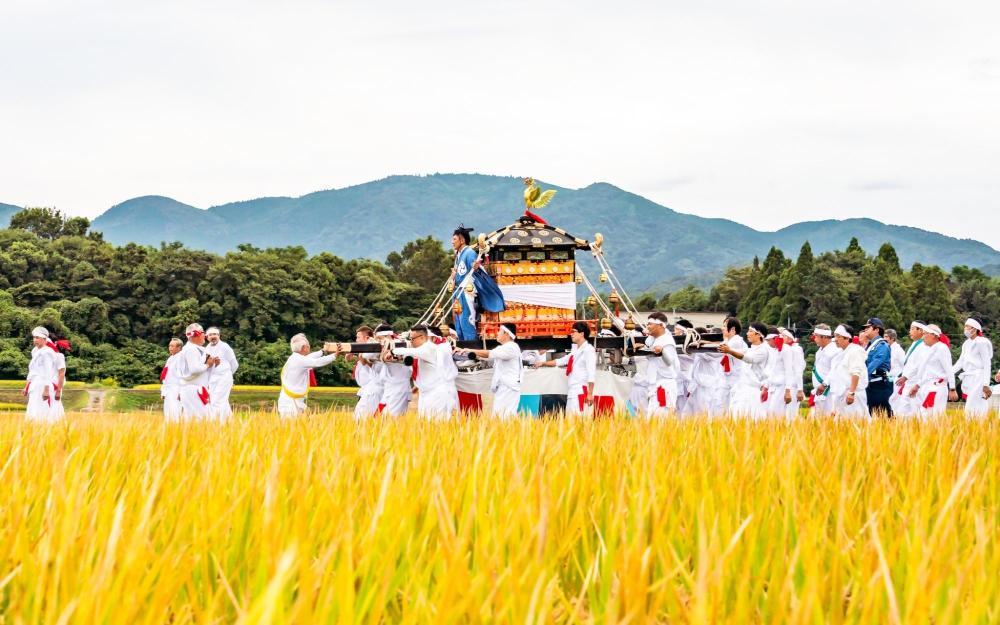
A portable shrine heading to the Ukiden
Photo by Miyamoto Tatsuyuki
The Chushusai (“mid-autumn festival”) is a large, three-day festival held by Usa Jingu Shrine in honor of the Hayato people of southern Kyushu who were subjugated by the Yamato court in the early eighth century. The festival begins with a grand procession transporting the deity Hachiman in a mikoshi (portable shrine) to the Ukiden, a remote sanctuary located on a riverbank, where he is welcomed by Buddhist monks. The most important ritual is held on the second day, when mollusks are ceremonially released into the river in a rite of atonement called hojo-e (“rite for the release of living beings”). On the final day, after a prayer service to pacify the spirits of the Hayato, the mikoshi procession returns to Usa Jingu, and Hachiman is transferred back to his main place of enshrinement at the Jogu (Upper Shrine).
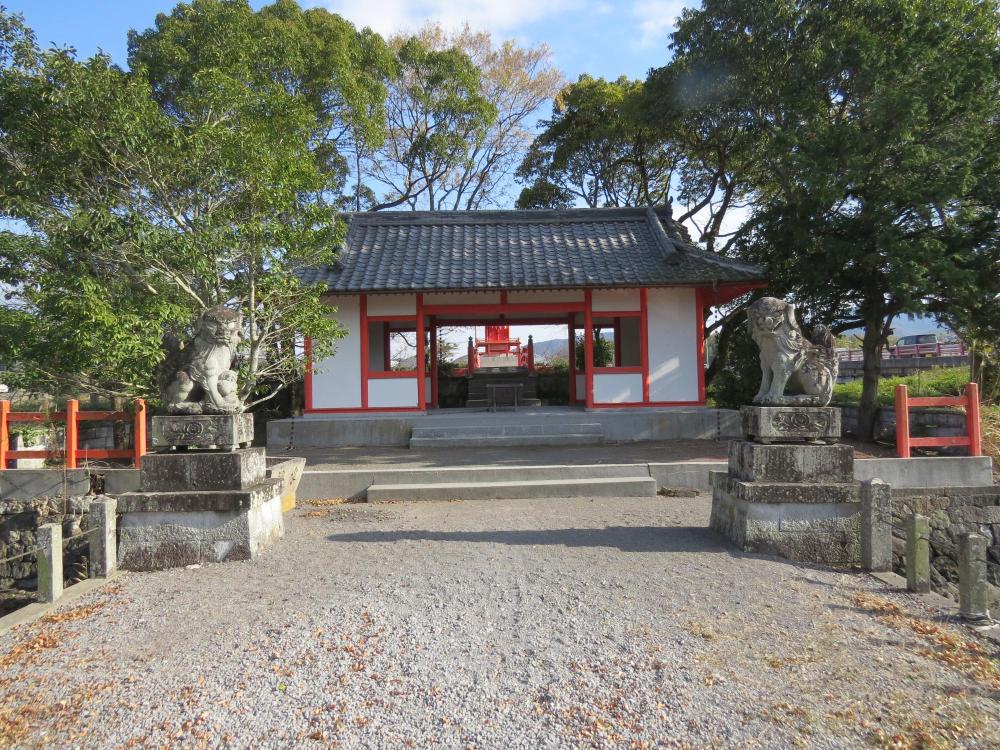
Ukiden
Hayato Rebellion and Origins of the Festival
Ancient historical records state that the Hayato rebelled against the Yamato court in the early eighth century. When Yamato forces were dispatched from a stronghold in northern Kyushu in 720, Hachiman accompanied them in a portable shrine to offer divine protection. This is believed to have been the origin of mikoshi use in festivals. The campaign soon ended with the defeat and subjugation of the remaining Hayato.
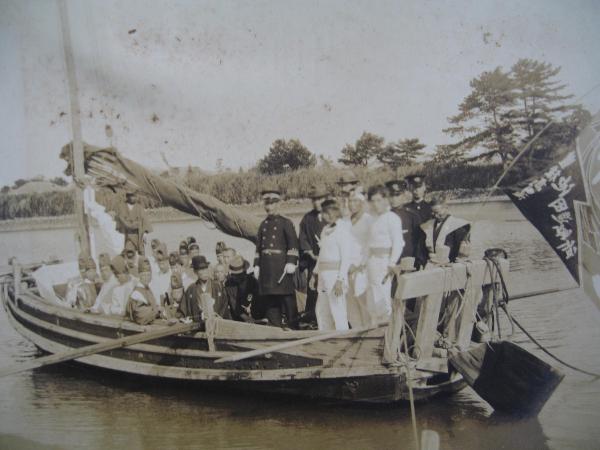
Participants of the Nina Hojo ritual (1939)
However, plague and famine struck the area shortly after, which people believed were caused by the vengeful spirits of the Hayato. An oracle received from Hachiman then declared that a hojo-e ritual should be held annually to atone for the killings committed during the Hayato Rebellion. After preparations for the initial rite were complete, a procession departed for Wama Beach, where mollusks were ceremonially set free into the water. This may have been the first hojo-e ritual performed by a shrine-temple complex in Japan.
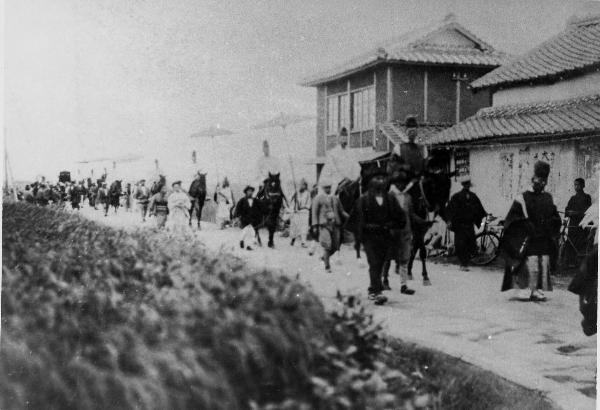
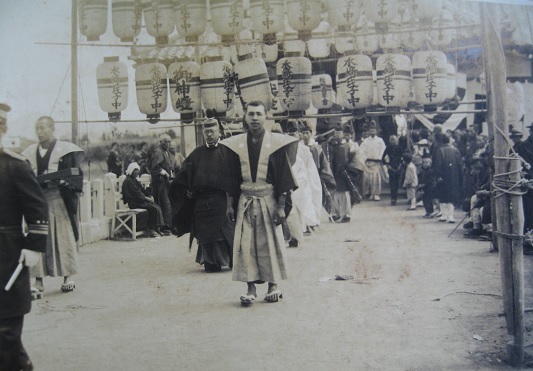
Procession of Chushusai participants (mid-twentieth century)
During the thousand-year period when a syncretic fusion of Shinto and Buddhism was practiced at Usa Jingu, the festival was simply called the Hojo-e. After the government ordered the separation of the two religions in the late nineteenth century, it became a seasonal Shinto festival and was renamed Chushusai.
Day 1: Mukaeko Ritual
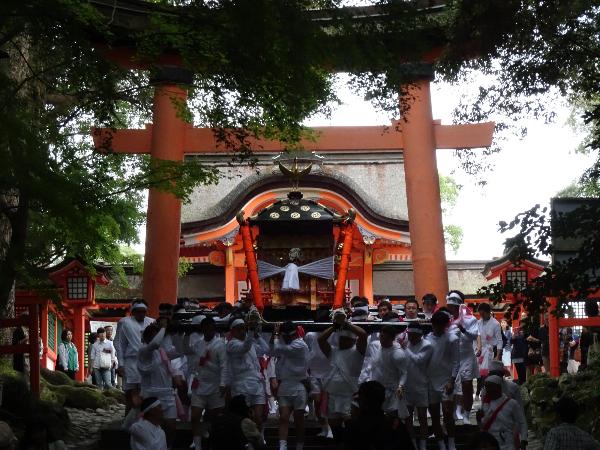
A portable shrine departing from the Jogu
(Upper Shrine)
On the first day of the festival, Hachiman is transferred from the sanctuary at the Jogu to a portable shrine. The mikoshi procession travels the 8-kilometer route to the Ukiden, a small shrine on the bank of the Yorimo River. Before Hachiman is temporarily enshrined in the Ukiden, Buddhist monks from the Rokugo Manzan temples on the nearby Kunisaki Peninsula chant sutras in front of the mikoshi in a ritual called Mukaeko (“chanting sutras to welcome the deity”), another reminder of the syncretic roots of Usa Jingu.
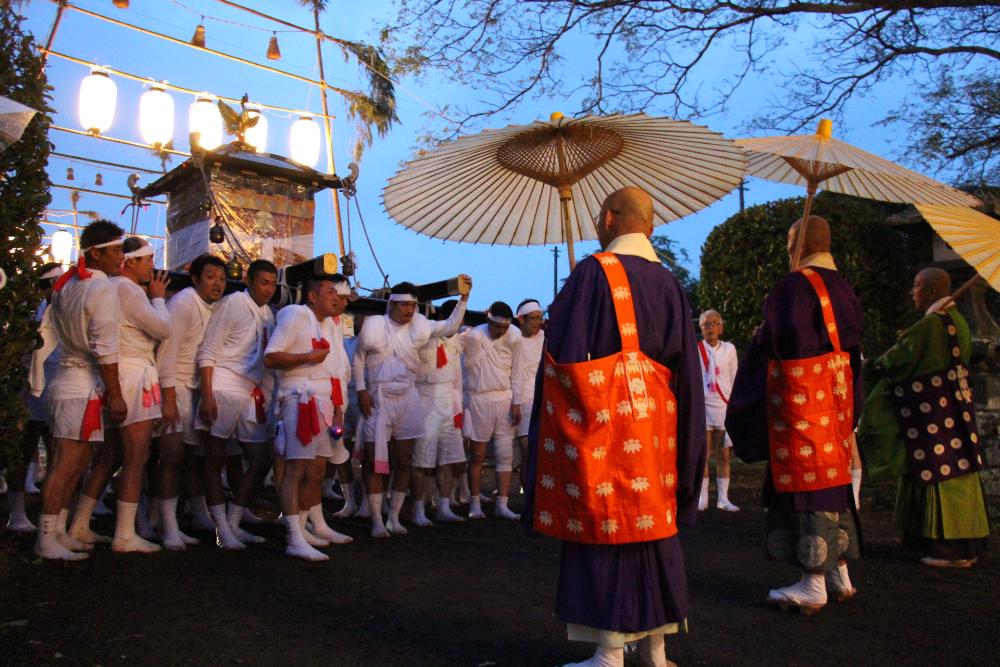
Monks chanting sutras during the Mukaeko ritual
Day 2: Hojo no Gi Ritual
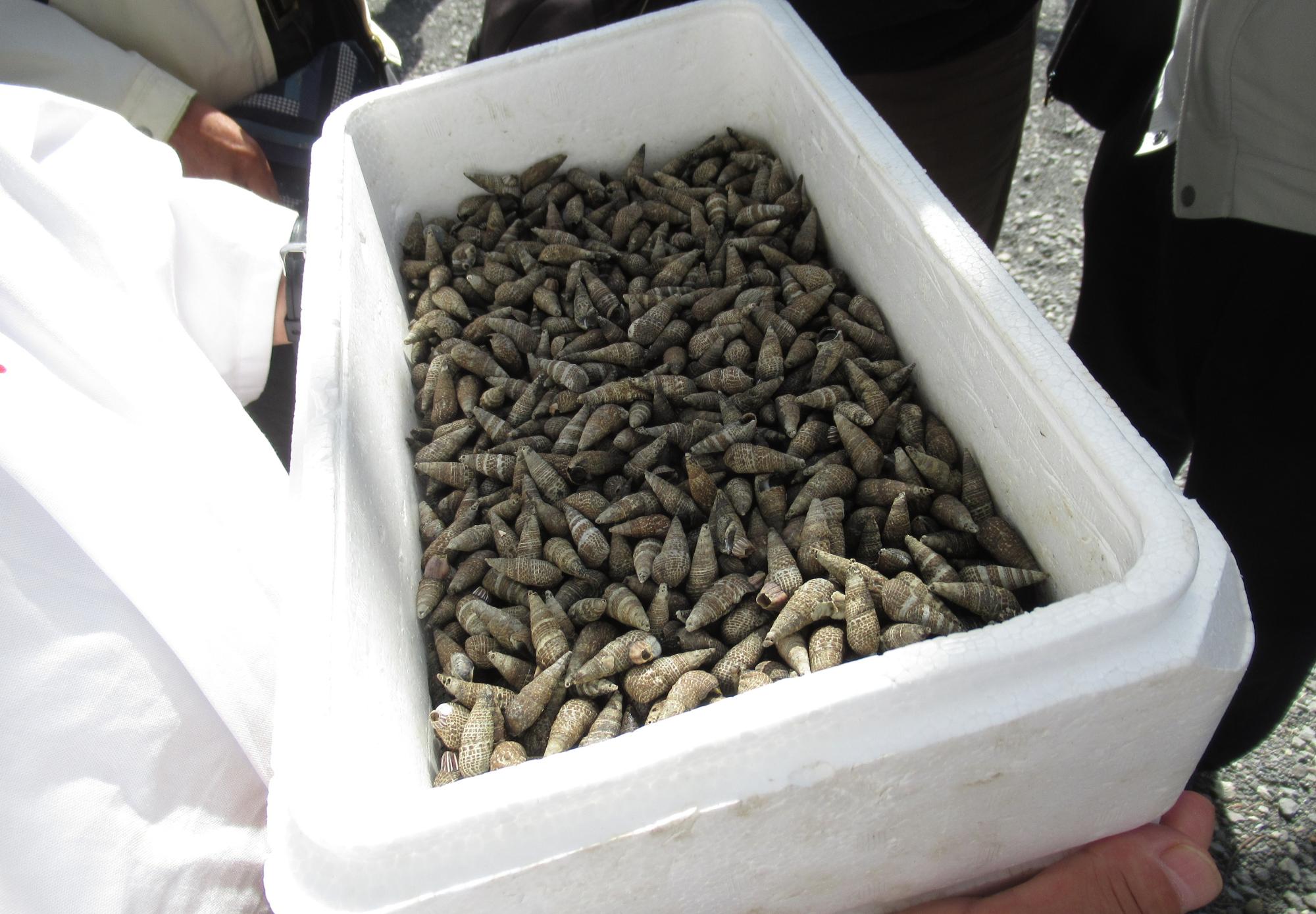
River snails released during the Nina Hojo ritual
The main ritual of the Chushusai is the Hojo no Gi. Though most hojo-e ceremonies involve releasing fish and birds, at Usa Jingu the living beings set free are river snails and clams. According to legend, people attributed the spread of the plague in the eighth century to shellfish and therefore believed that the restless spirits of the Hayato had been reborn in that form.
In preparation for the ceremony, mollusks are gathered and wrapped in reed bundles by members of the Ninagi family, who have performed this duty for generations. The bundles undergo purification at a shrine designated for this purpose and are brought to the Ukiden, where Shinto priests recite prayers at the sanctuary. The priests then travel by boat to the middle of the river and release the snails and clams after another ritual. If the water level is low, the priests stand on the riverbank to perform the ceremony.
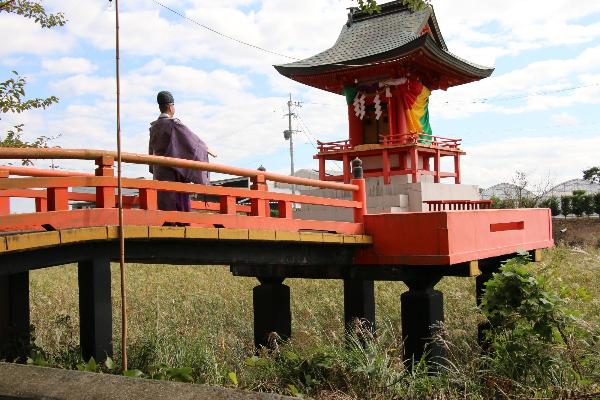
A ritual conducted at the Ukiden
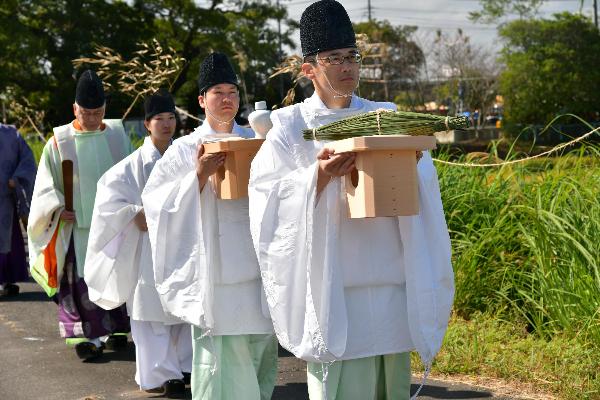
Mollusks carried in reed pouches
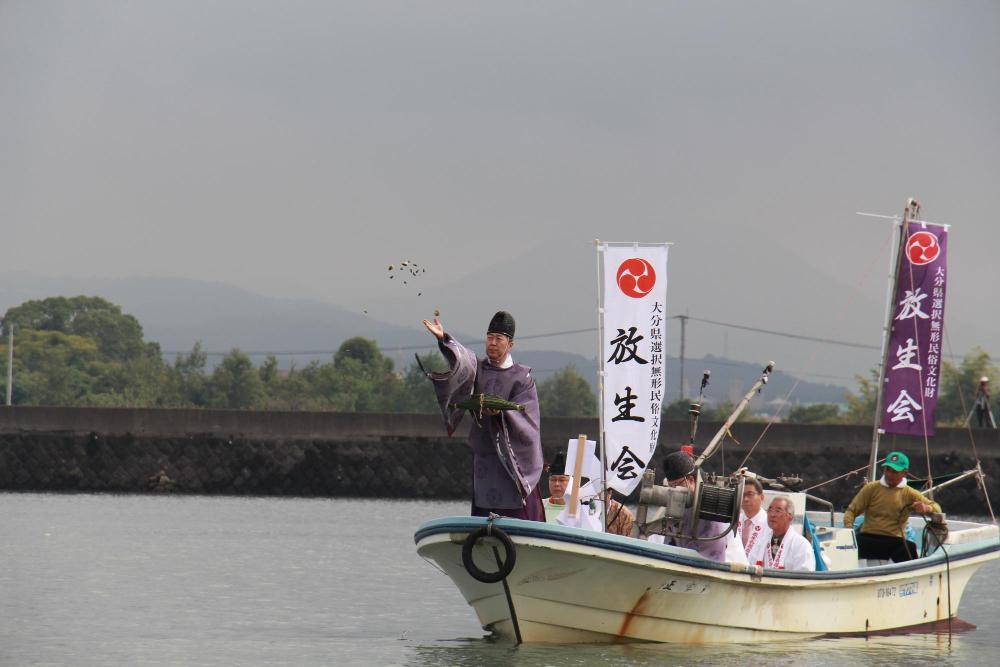
A priest releasing mollusks into the river during the Nina Hojo ritual
Day 3: Goryo Chinkon Prayer Service
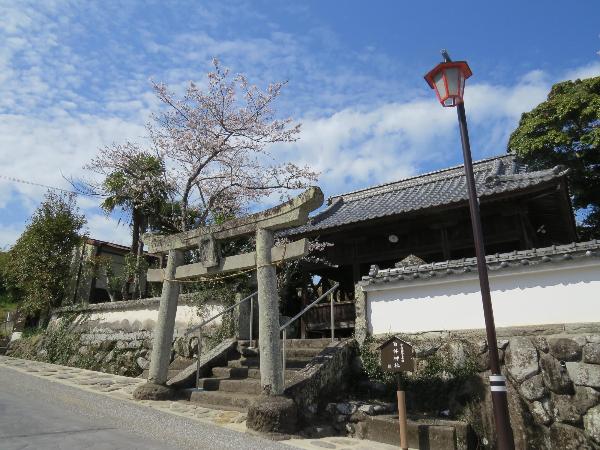
Hyakutai Jinja Shrine
On the final day, the mikoshi transporting Hachiman is carried back to Usa Jingu. Along the way, the procession stops at Hyakutai Shrine, where priests offer silent prayers to pacify the spirits (goryo chinkon) for the Hayato people enshrined there. After the prayer service, the mikoshi procession returns to the Jogu accompanied by parishioners bearing paper lanterns. There Hachiman is transferred back to his sanctuary, bringing the Chushusai festival to a close.
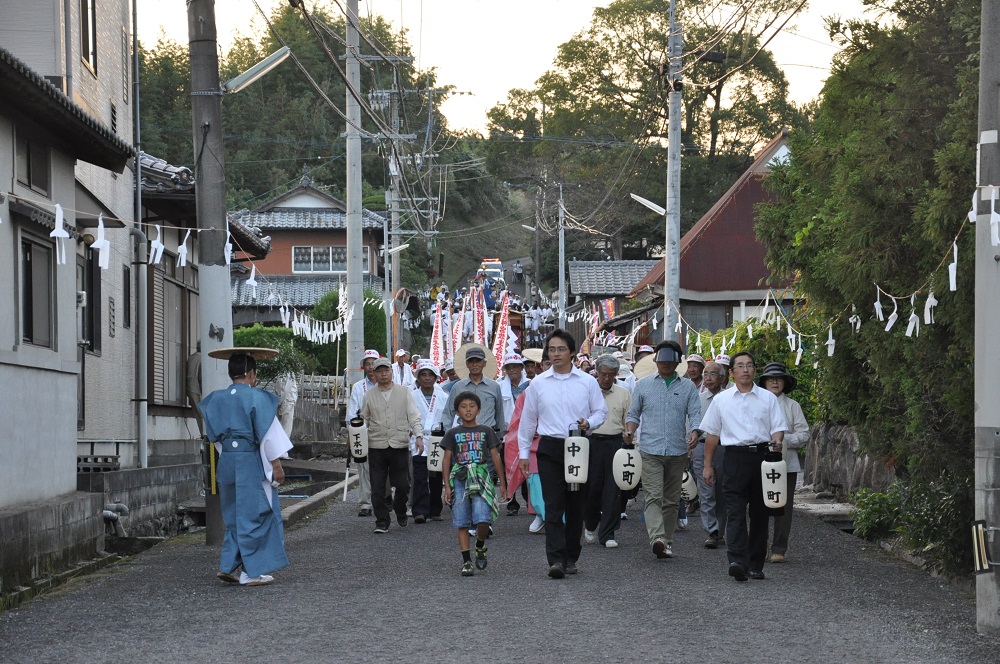
A procession of worshippers heading to the Jogu

This English-language text was created by Japan Tourism Agency.







更新日:2024年03月19日